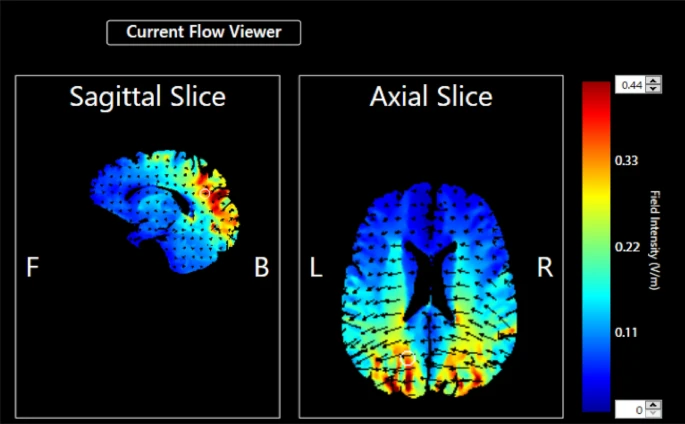 Hand choices—deciding which hand to use to reach for targets—represent continuous, daily, unconscious decisions. The posterior parietal cortex (PPC) contralateral to the selected hand is activated during a hand-choice task, and disruption of left PPC activity with a single-pulse transcranial magnetic stimulation prior to the execution of the motion suppresses the choice to use the right hand but not vice versa. These findings imply the involvement of either bilateral or left PPC in hand choice. To determine whether the effects of PPC’s activity are essential and/or symmetrical in hand choice, we increased or decreased PPC excitability in 16 healthy participants using transcranial direct current stimulation (tDCS; 10 min, 2 mA, 5 × 7 cm) and examined its online and residual effects on hand-choice probability and reaction time. After the right PPC was stimulated with an anode and the left PPC with a cathode, the probability of left-hand choice significantly increased and reaction time significantly decreased. However, no significant changes were observed with the stimulation of the right PPC with a cathode and the left PPC with an anode. These findings, thus, reveal the asymmetry of PPC-mediated regulation in hand choice.
Hand choices—deciding which hand to use to reach for targets—represent continuous, daily, unconscious decisions. The posterior parietal cortex (PPC) contralateral to the selected hand is activated during a hand-choice task, and disruption of left PPC activity with a single-pulse transcranial magnetic stimulation prior to the execution of the motion suppresses the choice to use the right hand but not vice versa. These findings imply the involvement of either bilateral or left PPC in hand choice. To determine whether the effects of PPC’s activity are essential and/or symmetrical in hand choice, we increased or decreased PPC excitability in 16 healthy participants using transcranial direct current stimulation (tDCS; 10 min, 2 mA, 5 × 7 cm) and examined its online and residual effects on hand-choice probability and reaction time. After the right PPC was stimulated with an anode and the left PPC with a cathode, the probability of left-hand choice significantly increased and reaction time significantly decreased. However, no significant changes were observed with the stimulation of the right PPC with a cathode and the left PPC with an anode. These findings, thus, reveal the asymmetry of PPC-mediated regulation in hand choice.























